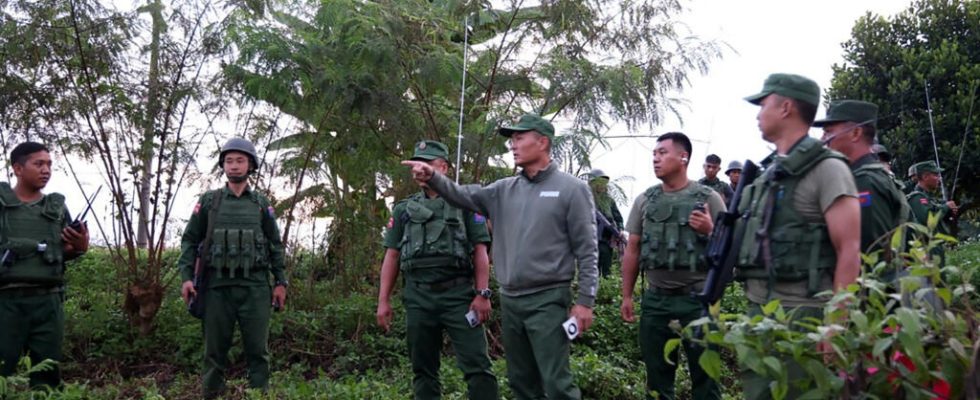Since Wednesday June 19, the Burmese rebellion has denounced the deaths of several civilians after a campaign of airstrikes led by the army. And this, despite the ceasefire negotiated under the aegis of China between the Burmese government and the rebel coalition.
3 mins
The Ta’ang National Liberation Army (TNLA), one of the main components of the rebellion Burmese, spoke on Wednesday June 19 of airstrikes in the Mogok region, in the center of the country, near a ruby and precious stone extraction center. The death toll was one and three injured, including a ten-year-old child, according to the rebel groups’ press release. It also reported, 24 hours earlier, another drone attack. Between artillery fire and drone attacks ordered by the junta, according to the count of the insurrection, the government has ordered more than 40 bombings in the northeast of the country since January.
Read alsoBurma: the number of displaced people reaches three million, according to the UN
Beijing, however, had negotiated a truce in January between the Burmese military in power since the coup d’état of February 2021 and this armed movement, after months of fighting which had led to the displacement of more than half a million people near the border with the China. The ceasefire had also allowed the alliance, made up of the Ta’ang National Liberation Army (TNLA), the Myanmar National Democratic Alliance (MNDAA) and the Army of Arakan (AA), to retain parts of territories which it had seized in the northern state of Shan.
Both camps pass the blame to each other
These military operations constitute the latest violations of the ceasefire by the forces of the generals in power. The TNLA assures that they had also already bombed its positions, cut the roads and limited the movement of goods towards the towns controlled by this armed organization.
For his part, the junta spokesperson, Zaw Min Tun, accused the TNLA of being the “ main group behind the incidents » in Shan State. As a reminder, the ethnic alliance launched a surprise offensive in the north against the central military power at the end of October. It had taken advantage of the weakening of regular troops to restart a decades-old war for control of entire areas and the important resources there, taking several towns and border crossroads vital for trade with China. A major blow to an isolated and cash-strapped junta.
Read alsoBurma: rebels take control of a western town, the Rohingya pay a heavy price
Burma has a dozen armed groups from ethnic minorities, some of which have conquered territory in regions bordering China and have been fighting against the army since independence from the United Kingdom in 1948. The fighting in Shan State have declined in intensity, but the AA has launched its own offensive in the west, where it claims to be fighting for greater autonomy for the ethnic Rakhine population.
Peace talks are still stalled. The last chapter of negotiations held in May in southwest China produced no notable progress.
